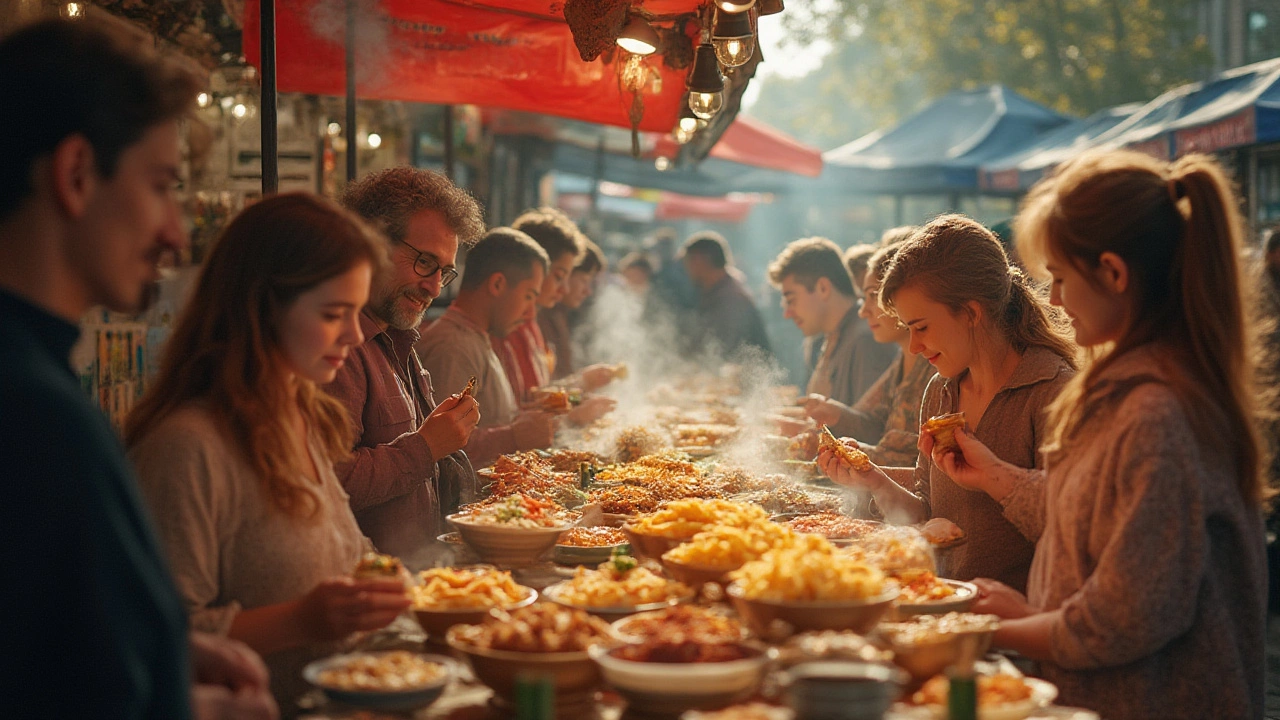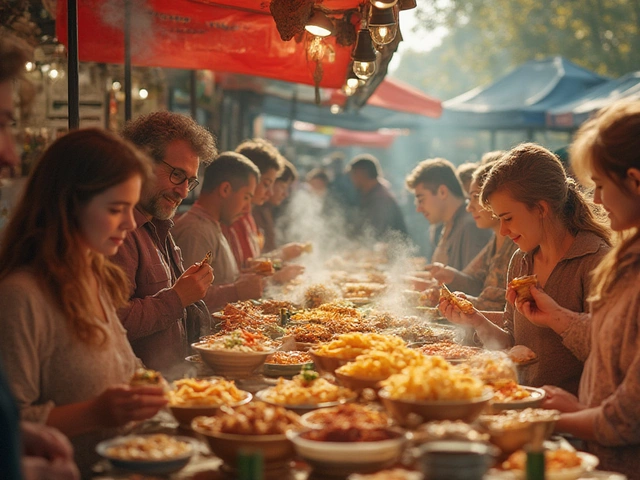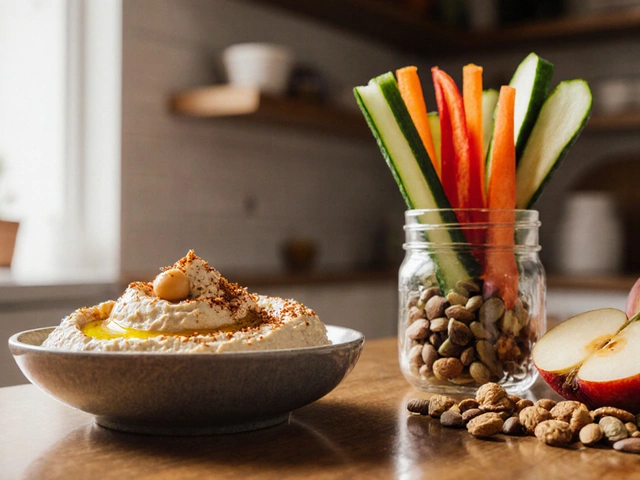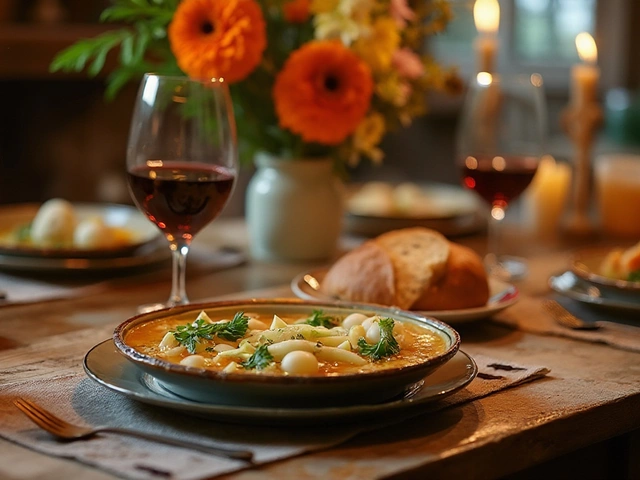Ask a group of people about the yummiest food in the world and you might kick off a heated debate. One person might tell you nothing tops a steamy bowl of ramen on a rainy night, while someone else might start raving about fresh Neapolitan pizza. Food isn’t just fuel—it’s one of life’s little fireworks. Flavors tug at childhood memories and light up taste buds in ways that no other experience quite does. For me, watching my daughter Clementine devour her first bowl of macaroni and cheese was a reminder: it’s not just about taste. It’s comfort, surprise, and—once in a while—a little adventure packed on a fork. So, which dish truly deserves the title of “yummiest in the world?” Let’s chew on the stories, the science, and the indescribable magic that make food unforgettable.
The Science of Delicious: What Makes Food Yummy?
Taste isn’t as simple as salty or sweet. Scientists have pinned down five main tastes: sweet, salty, sour, bitter, and umami—the last of which translates roughly to “savory deliciousness.” Our brains are wired to crave a balance of these, which is why a burger with melty cheese, zippy pickles, and a soft bun just hits different. But it goes deeper. The way food smells can create up to 80% of the flavor, which is why nothing tastes right if you have a cold. The texture—the creaminess of mashed potatoes, the crunch of fried chicken skin—can sway a dish from meh to legendary.
But why do some foods seem universally loved? Studies have shown that humans naturally like sweetness (think ice cream or ripe mangoes) because high-sugar foods are calorie-rich, which was important during caveman days. Salty snacks like fries or chips satisfy the body’s need for certain minerals. There’s actually a gene (TAS2R38) that makes some folks love, while others hate, bitter flavors like Brussels sprouts or dark chocolate. It gets even weirder: cilantro tastes like soap to about 10% of people because of variations in the OR6A2 gene. Food preferences can come down to what your parents fed you, but also to your personal genetic lottery.
Culture brings in its own spice. In Thailand, street vendors whip up pad thai with a just-right balance of acid, salt, sugar, and umami—they’re chasing what locals call "harmony." In Italy, the secret isn’t the toppings, but the right flour for the dough and a flame-blistered bake. Researchers at Oxford once found that people rate chocolate tastier if they hear sweet, tinkly music while eating it. Our senses team up to decide what makes food delicious.
The yummiest foods master the art of balance, hit the right textures, and feel familiar—while sometimes still introducing something surprising. That’s why Clementine’s favorite mac and cheese is both cozy (cheesy and soft) and exciting (with crunchy panko on top). So whatever you love, chances are it checks a lot of boxes for your brain, your upbringing, and even your genes.
World’s Most Beloved Dishes: Tastes and Traditions
Travel a little, and you’ll see every country swears by its own “best food.” Some dishes have leaped borders and become global legends. Think, for example, of pizza. The gooey cheese, singed crust, tangy sauce—it’s the world’s comfort blanket. Neapolitan-style pizza (the one with minimal toppings and a chewy, charred base) is so iconic that UNESCO added it to its list of intangible cultural heritages. Talk about international bragging rights.
Or consider sushi, Japan’s bite-sized masterpiece. Outside of Tokyo, people might only think of rolls, but the “nigiri” (just fish atop vinegared rice) lets every flavor shine. Italians may argue nothing beats pasta—whether that’s spaghetti carbonara, lasagna, or an old-school ragù simmered for hours. Head to India, and biryani stands out as a consistent favorite—a layered rice dish loaded with spices, saffron, roasted meats, fried onions, herbs, and hidden surprises like raisins or eggs.
Mexican street tacos, with smoky grilled meat, onions, and salsa hugged in a toasty corn tortilla, make even the pickiest kids (including mine) reconsider vegetables. And let’s not forget Middle Eastern classics like hummus or falafel—both staples in my house, and serious crowd-pleasers at any picnic.
Want numbers to back it up? Here are some stats to chew on:
| Dish | Country | Estimated Annual Global Orders (2024) |
|---|---|---|
| Pizza | Italy | 5 billion |
| Sushi | Japan | 2.1 billion |
| Hamburger | USA | 12 billion |
| Tacos | Mexico | 4.5 billion |
| Biryani | India | 1.5 billion |
The numbers prove it—certain dishes win hearts worldwide, and it’s usually because they hit that sweet spot between flavorful, affordable, and sharable. Plus, classic recipes almost always lead to family traditions. Our Saturday nights? Homemade pizza, dough flung into the air, toppings everywhere. No need for fancy truffles—a chewy, charred crust is magic enough.

Sweet, Spicy, or Savory: What Do People Crave Most?
If you’ve ever watched a toddler taste ice cream for the first time, you get it—our sweet tooth is powerful. According to a 2023 taste preference survey from the International Food Information Council, about 68% of people worldwide said their favorite comfort foods are sweet, like chocolates, cakes, or doughnuts. But once you grow up, your palate starts hunting new thrills. That’s where spicy and savory foods come in strong.
Spiciness—think Thai curries, Sichuan hotpot, Nashville hot chicken—triggers the same pain sensors as a minor burn. Your body responds by bumping up endorphins (that famous “chili high”), which is why some people chase fiery foods. It explains why South Koreans polish off kimchi daily or why people order extra-hot wings at game night. Even my kid, who started out running from anything spicier than ketchup, started dipping fries in sriracha—they catch on fast when spice becomes a family dare.
Then there’s umami, the taste behind brothy ramen, aged cheeses, tomato sauces, and anything with mushrooms or soy. Scientists only named it in the early 1900s, but we’ve been loving it since time began. According to a 2025 report from TasteAtlas, the dishes most often rated "addictive" by testers combined strong umami (like Parmesan or soy) with either fat or sugar. That’s why things like chicken tikka masala, cheeseburgers, or classic chicken noodle soup are more than meals—they're edible hugs.
It’s easy to track these patterns on social media. The most shared #foodporn images are often oozy, stretchy, crispy, or syrupy—think cheese pulls, caramel drizzling down a stack of pancakes, or the crack of burnt sugar on crème brûlée. Kids and adults agree: mouthfeel and visual appeal matter.
- Crunchy: Fried chicken, tempura, churros
- Creamy: Panna cotta, risotto, ice cream
- Juicy: BBQ ribs, mango, watermelon
- Spicy: Buffalo wings, kimchi, green curry
- Cheesy: Macaroni, poutine, raclette
Cravings change over time or even by season. Cold day? Most people run straight for stews or noodles. Hot summer? Watermelon, ceviche, or gelato rule. For families, poll your crew once a month. You might be surprised what lands on top—and you’ll find the yummiest food is sometimes the one you share with others, not just the fanciest thing on Instagram.
How to Hunt and Savor the World’s Yummiest Foods
If you’re hungry for adventure (and not just the Netflix kind), you can hunt for the world’s yummiest bites almost anywhere. First tip: get curious. The best food discoveries happen when you wander outside your usual order, whether that’s at your neighborhood taqueria or a bustling overseas street market. Clementine’s game for this is “Taste One New Thing”—sometimes it’s a hit, like crispy Korean chicken, and sometimes, let’s just say, natto wasn’t her jam.
Food tours—either virtual or in-person—are worth the money if you’re curious about why certain dishes matter. In Spain, a pintxo crawl (little snacks on bread) explains half the city’s social life. In Morocco, a bowl of slow-cooked tagine can break barriers faster than broken French.
Want a world tour at home? No plane ticket needed—just stock up on big flavors. Try Thai fish sauce (nam pla) for umami bombs, or smoked paprika to bring the spirit of Spanish paella right into your kitchen. Italian “00” flour turns homemade pizza crust from cardboard into cloud-soft wonder. If you have kids, let them build their own sweet or savory bites. The combinations get wild, but you’ll notice even picky eaters clean their plates when they’re in control.
Here are a few tips for getting closer to the yummiest food experiences:
- Follow your nose at food markets—it’s usually right about what smells best.
- Ask locals (or your friend’s grandma) for the one dish you shouldn’t miss.
- Try to taste “first bites” like a kid does—with curiosity, not a checklist.
- Mix up textures on your plate. Crunch next to creamy is always better.
- Don’t write off gross-sounding dishes until you’ve tried a real version. Sometimes it’s all about the cook.
- Learn the story behind the dish. It always tastes better when you know who made it and why.
- Pay attention to seasons: tacos in summer, stews in winter, and strawberries the day they ripen.
No single food wins the “yummiest” title forever. Sometimes, the best thing you’ve ever eaten is a smoky grilled cheese by a campfire. At other times, it’s the first spoonful of gelato on a sticky Italian afternoon. Wherever you find your yummiest bite, remember: It’s not just flavor. It’s the stories, the company, and a dash of adventure that make every mouthful magic.
So, what’s the yummiest food in the world? Ask ten kids (or adults) and get ten answers. But if you follow your curiosity and don’t mind getting your hands a little sticky, you’ll keep discovering new favorites. That’s a promise.









Write a comment